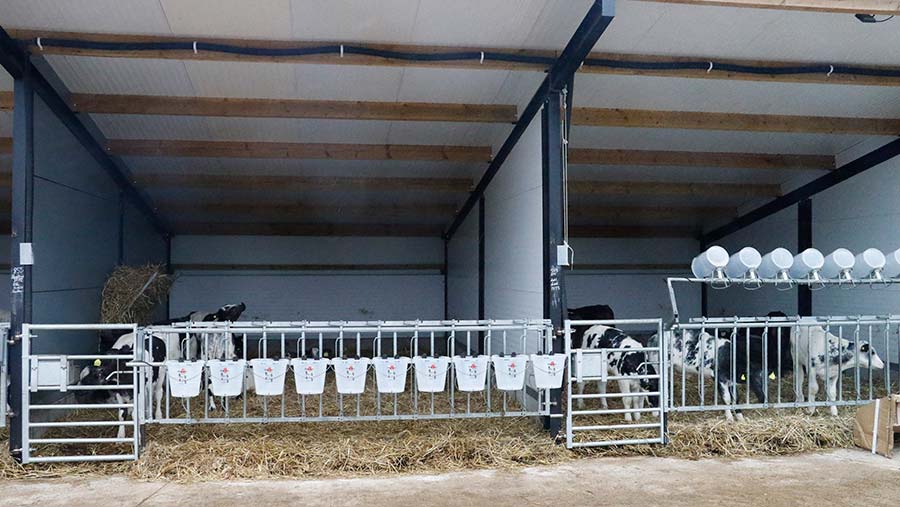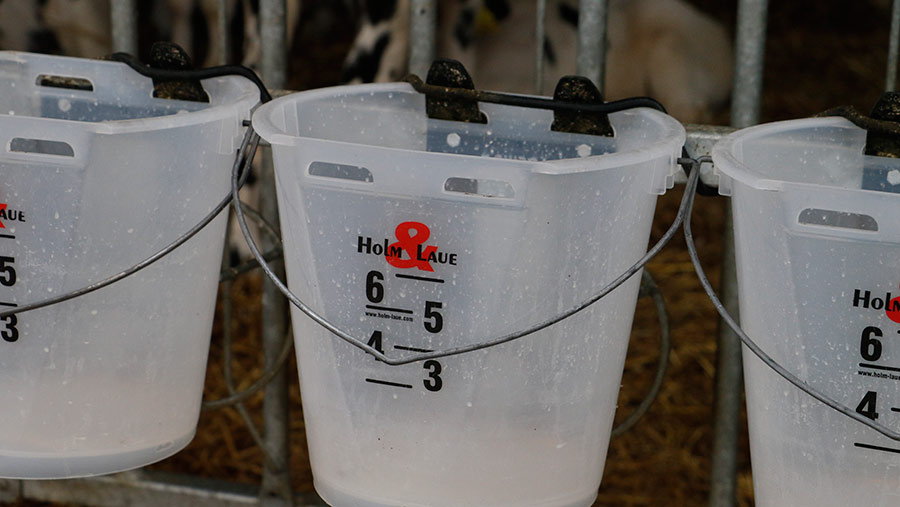How calf rearers have drastically reduced pneumonia cases

Thomas Williams has drastically reduced calf pneumonia by 36% since erecting a purpose-built calf unit.
Mr Williams, who farms with his parents Robert and Angela and wife Michelle in Ellesmere, Shropshire, buys calves from Meadow Quality and finishes about 200 beef animals annually.
Rearing calves were originally housed in a large beef shed with a central feed passage and straw-bedded yards, but the height of the concrete-panelled walls were too high for the class of stock and this was restricting air flow.
It was only after moving a group to a smaller building they realised they needed purpose-built accommodation.
After stumbling across a video on YouTube of a state-of-the-art calf shed, Mr and Mrs Williams were inspired to take a trip to the farm in New York state last February where they visited a number of calf-rearing facilities to gather ideas for their own new build.
See also: Q&A: Pneumonia in calves and how to combat it
“We learned a huge amount [from the trip]. It was a totally different climate – it was -20C when we went. They had a lot of machine ventilation and all of the sheds had low concrete walls.”
Mr Williams used these details to design his own youngstock shed. The shed, which cost £80,000, was completed at the end of last year and houses 10 pens of 10 calves – 100 in total.
Farm facts:
- 80ha owned and 22ha rented
- Finishing 200 cattle annually
- Calves sourced from Meadow Quality
- Growing 36ha winter wheat and 8ha maize, the rest silage
About the shed
The shed walls and roof comprise insulated Kingspan boards, which, as well as being easier to clean than concrete, are much warmer – he felt the concrete ones used in the US were too cold.
An air inlet at the back of each bay drags fresh air into the building to help create the stack effect – removing stale air and keeping the environment dry.
Benefits
The new unit has already helped them cut pneumonia cases from about 56% to 20%. Furthermore, mortality has been zero so far.

Calves are fed milk twice daily in locking yokes using individual buckets. This has prevented calves from stealing each other’s milk and has eliminated navel sucking.
It also allows any sick calves – slow or non-drinkers – to be spotted early and easily treated while the calf is restrained before symptoms become clinical.
They have further eased pressure on labour by reducing the time taken to feed by purchasing a milk taxi for £5,300.
Key shed features:
- Shed is 6.7m long and 4.6m wide
- 20cm slope every 6.7m
- 15deg sloping roof
- 10 calves per pen
- Concrete curb at bottom of panels to prevent damage when cleaning
Feeding:
- Calves fed 3 litres milk twice daily (1kg milk powder) and 2kg of blend
- Ad-lib straw
- Calves brought in at six weeks in batches of 10
- Stay on milk for one month
- Weaned over two weeks and transitioned on to a homegrown TMR at 3 to 4 months
- Calves tagged and tested for BVD and vaccinated for pneumonia
